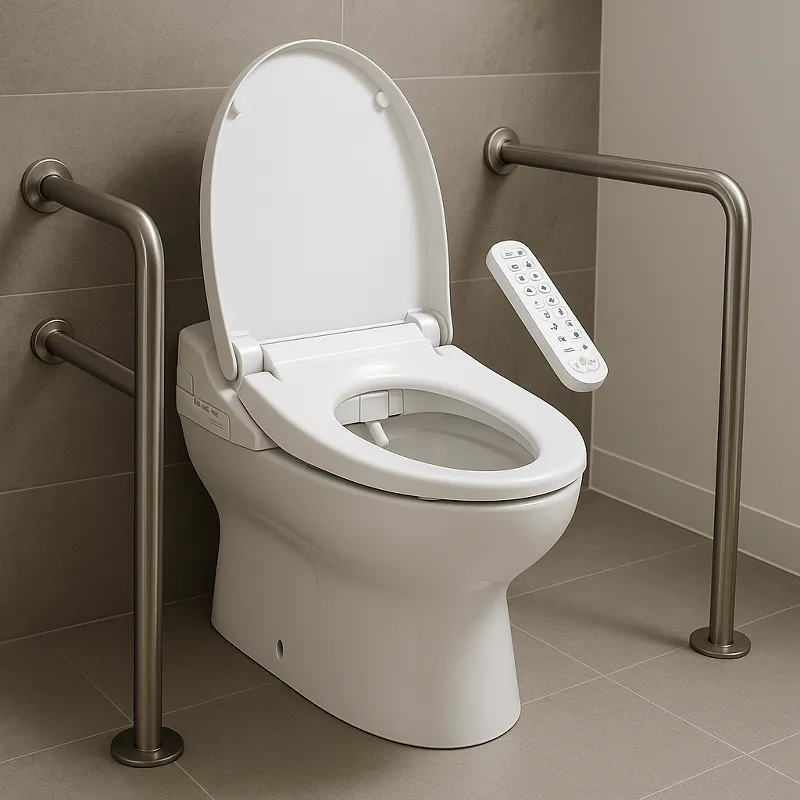
Introduction to Bidet Design Trends
Bidets have long been a staple in many parts of the world, but their usage has been steadily increasing in regions where they were previously less common. This rise in popularity can be attributed to a growing awareness of hygiene, sustainability, and the need for more accessible bathroom solutions. For individuals with mobility challenges, bidets offer a level of independence and comfort that traditional toilet setups may not provide. This article will explore the latest design trends in bidets specifically tailored for those with mobility challenges, offering insights into innovative features, technological advancements, and user-friendly designs.
Essential Bidet Features for the Elderly 👆Understanding Mobility Challenges
Before delving into bidet design trends, it is crucial to understand the specific needs and challenges faced by individuals with mobility impairments. Mobility challenges can result from various conditions, including arthritis, multiple sclerosis, spinal cord injuries, and age-related issues. These conditions often limit an individual’s ability to perform everyday tasks, including using the bathroom. Traditional bathroom setups may not cater to these needs, making it essential to explore solutions that provide safety, ease of use, and dignity.
Improvement in Vulvar Health by Using Bidet Instead of Toilet Paper 👆Ergonomic Design Features
Height Adjustability
One of the most significant considerations in bidet design for individuals with mobility challenges is height adjustability. Standard toilet heights may not be suitable for everyone, particularly for those using wheelchairs or with limited leg movement. Modern bidets are increasingly incorporating adjustable height features, allowing users to customize the seat height to their comfort level. This ergonomic design not only provides ease of transfer from wheelchair to bidet but also ensures proper posture, reducing strain on the user’s body.
Easy-to-Reach Controls
Bidets designed for mobility-challenged users often feature controls that are easy to reach and operate. These controls are typically positioned on the side of the bidet or are included in a remote control device that can be easily handled. The buttons are large and clearly labeled, often with tactile feedback, to assist those with visual impairments or reduced dexterity. Such thoughtful design ensures that all users, regardless of their physical limitations, can operate the bidet independently and with confidence.
How to Use a Bidet to Prevent Anal Microtrauma 👆Advanced Technological Integrations
Automated Functions
Automation plays a crucial role in enhancing the functionality of bidets for users with mobility challenges. Modern bidets often feature automated functions such as self-cleaning nozzles, adjustable water pressure, and temperature control. These functions can be pre-programmed to suit user preferences, minimizing the need for manual adjustments. Furthermore, some advanced models include motion sensors that automatically open and close the lid, offering a hands-free experience that is both hygienic and convenient.
Smart Home Compatibility
The integration of smart home technology with bidets is another trend that is transforming how users interact with their bathroom fixtures. Bidets compatible with smart home systems can be controlled via smartphones, voice commands, or even automated schedules. This technology provides unparalleled convenience, allowing users to customize their bidet experience without needing to physically interact with the controls. For individuals with severe mobility restrictions, this feature can significantly enhance their independence and quality of life.
Impact of Bidet Use on Gut Microbiota Balance 👆Safety Enhancements
Non-Slip Surfaces
Safety is a primary concern for individuals with mobility challenges, and modern bidet designs address this with non-slip surfaces. The seat and surrounding areas of the bidet are often made from materials that provide a secure grip, reducing the risk of slips and falls. Additionally, some models include side rails or armrests that offer extra support when sitting down or standing up, further enhancing user stability and safety.
Emergency Assistance Features
For added safety, some bidets now come equipped with emergency assistance features. These include panic buttons or alert systems that can notify caregivers or family members in case of a fall or medical emergency. Such features are crucial in providing peace of mind to both users and their loved ones, knowing that help is just a button press away if needed.
Potential of Bidet in Alleviating Skin Conditions Eczema and Psoriasis 👆Customizable Aesthetic Options
While functionality and safety are paramount, aesthetics also play a significant role in the design of bidets for mobility-challenged individuals. Manufacturers are increasingly offering customizable options that allow users to tailor the appearance of their bidet to match their bathroom decor. From color choices to sleek, modern designs, these options ensure that the bidet is not only a practical addition to the bathroom but also a visually pleasing one.
Positive Effects of Bidet on Managing Chronic Constipation 👆Conclusion: Embracing Innovation
The design trends in bidets for those with mobility challenges highlight a broader movement towards creating more inclusive and accessible environments. By incorporating ergonomic features, advanced technology, and safety enhancements, modern bidets are transforming the bathroom experience for individuals with mobility impairments. These innovations not only address practical needs but also empower users to maintain their independence and dignity. As technology continues to advance, we can expect to see even more exciting developments in this space, further improving the quality of life for those with mobility challenges.
Related Post: How to Use a Bidet to Prevent Anal Microtrauma
Relationship Between Prolonged Toilet Use and Bidet 👆